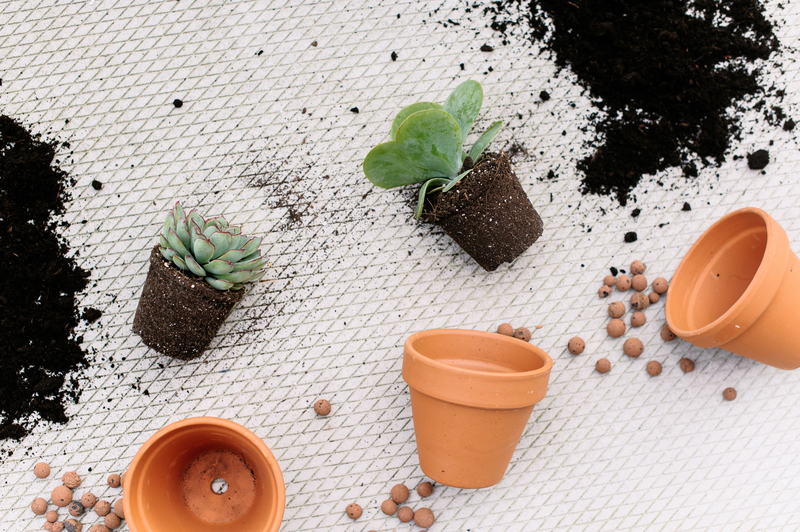Ultimate Guide to Cleaning Curtains Correctly
Posted on 30/08/2025
Ultimate Guide to Cleaning Curtains Correctly
Curtains are essential for adding style, privacy, and comfort to any home or office. However, like any fixture, they accumulate dust, allergens, and odors over time. If you're unsure how to maintain them, this ultimate guide to cleaning curtains correctly is here to help. Read on for comprehensive, SEO-friendly advice that will ensure your drapes look fresh and last longer!
Why Clean Curtains Regularly?
Curtains are natural dust magnets. In addition to dust, they trap pet hair, pollen, smoke particles, and even mold spores -- especially in humid environments. Regular curtain cleaning:
- Improves indoor air quality
- Extends the lifespan of your fabric
- Prevents discoloration and deterioration
- Eliminates allergens and reduces allergy symptoms
- Keeps your home looking tidy and well-kept

Types of Curtains and Their Cleaning Needs
Understanding your curtains' fabric is crucial before attempting any cleaning technique. The wrong method could damage delicate materials or ruin vibrant prints.
Cotton Curtains
Cotton curtains are common and versatile. Most cotton drapes can be machine washed, but always check the care label before proceeding.
Silk Curtains
Silk curtains require special care due to their delicate fibers. Never immerse silk in water without confirming its washability; typically, dry cleaning is recommended.
Velvet Curtains
These heavy drapes add luxury but attract dust easily. Velvet is best cleaned by vacuuming or professional services, unless labeled as washable.
Linen Curtains
Linen is semi-delicate -- some can be hand-washed, but dry cleaning is often safer to avoid shrinkage and creasing.
Synthetic Curtains (Polyester/Blends)
Synthetics are durable and generally easy to care for -- most are machine washable and resist wrinkling and shrinkage.
Preparing Curtains for Cleaning
- Read the Manufacturer's Label: This tells you the preferred cleaning method.
- Remove hardware carefully -- hooks, rings, and tiebacks can snag or rust.
- Shake Out Loose Dust: Before deep cleaning, take curtains outside and give them a gentle shake.
- Vacuum thoroughly using a soft brush or upholstery attachment to remove surface dust and pet hair.
Different Methods for Cleaning Curtains
1. Machine Washing Curtains
For most machine-washable curtains (cotton, some polyesters):
- Remove hooks, weights, and other hardware
- Use a gentle or delicate cycle with cold or lukewarm water
- Choose a mild detergent to protect the fiber
- Avoid bleach unless the fabric is 100% white and bleach-safe
- Wash curtains alone or with similar fabrics/colors
- Hang to air dry; avoid using the dryer to prevent shrinkage
Tip: Iron while slightly damp for the best wrinkle removal. Always check the care label for maximum water temperature and cycle recommendations.
2. Hand Washing Curtains
This method is recommended for delicate fabrics and non-machine-washable curtains.
- Fill a clean tub or basin with lukewarm water
- Add a mild detergent formulated for hand-washing
- Gently agitate the fabric, paying attention to stains or soiled areas
- Rinse with cold water until all soap is removed
- Do not wring out -- gently press water out or roll in a towel
- Hang to drip-dry in a well-ventilated area
3. Steam Cleaning Curtains
Steam cleaning is an effective method for refreshing curtains and killing germs without immersion.
- Use a portable garment steamer or upholstery steam cleaner
- Start at the top, holding the steamer 6 inches away from the fabric
- Move downward in vertical strokes
- Let dry fully before rehanging to prevent mildew
*Do not use steam on fabrics unsuitable for high temperatures, such as certain synthetics or silk.
4. Dry Cleaning Curtains
Certain materials (velvet, brocade, lined curtains, and all silk curtains) often require dry cleaning. When in doubt:
- Take your curtains to a professional cleaner
- Inform them of intricate details, trims, or embellishments
- Request an allergen-friendly cleaning process if needed
5. Spot Cleaning
Spot cleaning works for minor stains without washing the entire curtain. Here's how:
- Use a clean microfiber cloth dampened with cold water and a tiny amount of mild soap
- Blot stains gently, don't rub
- Rinse with a fresh cloth and plain water
- Allow to air dry
Always conduct a patch test in an inconspicuous area to avoid color loss or fabric damage.
Special Considerations for Curtain Maintenance
Removing Odors from Curtains
- Hang outside on a dry, breezy day to air out
- Spritz with a fabric refresher or diluted white vinegar
- For stubborn smells, launder as advised above
Getting Rid of Mold and Mildew
- Immediately address mold -- wear a mask and gloves
- Brush off spores outdoors if dry
- Wash using hot water and detergent if fabric allows, or seek professional cleaning for delicate fabrics
- Ensure curtains are completely dry before hanging back up
Ironing and Steaming for Wrinkle Removal
- Use the correct heat setting according to fabric type
- Iron on the reverse side, especially on printed or delicate materials
- Alternatively, hang steamed curtains in the bathroom during a hot shower to let wrinkles fall out naturally
How Often Should You Clean Curtains?
Frequency varies based on your environment:
- In low-dust, pet-free homes: Every 6-12 months
- In homes with pets, smokers, or allergy sufferers: Every 2-3 months
- Heavy-use rooms (kitchens, bathrooms): Up to every month
Remember: Regular vacuuming or dusting every 2 weeks helps reduce the need for deep cleaning.
Eco-Friendly Curtain Cleaning Tips
- Use plant-based, biodegradable detergents
- Choose air drying over machine drying to save energy
- Recycle water where safely possible for pre-soaking and rinsing
- Repurpose old towels for blotting and drying
Professional Curtain Cleaning Services - When to Hire Experts
Sometimes, DIY curtain cleaning is not feasible -- such as with extra-long, lined, or intricately designed curtains. Expert curtain cleaning companies offer benefits:
- Advanced equipment and gentle cleaning agents
- Specialized methods for every material
- Pickup and re-installation services
- Guaranteed stain removal and odor treatment
- Allergy-reducing and anti-microbial processes
Tip: Always ask for a cost estimate and check for insurance before hiring professionals.
DIY Curtain Cleaning: Common Mistakes to Avoid
- Skipping the care label instructions
- Overloading the washing machine
- Using harsh chemicals or bleach without checking fabric compatibility
- Drying in direct sunlight (may lead to fading)
- Rehanging before curtains are completely dry (can cause mildew)
Simple Routine Care for Lasting Results
Keep your curtains fresh between deep cleans with these routine tips:
- Weekly dusting and vacuuming
- Opening windows daily for air circulation (weather permitting)
- Spot-treating stains as soon as they occur
- Flipping and repositioning heavier drapes to prevent sun damage on one side

Frequently Asked Questions About Curtain Cleaning
Can you wash all curtains in a washing machine?
Not all curtains are machine washable. Delicate fabrics like silk and some lined or blackout curtains may require dry cleaning. Always check the manufacturer's instructions.
How do I prevent my curtains from shrinking?
Use cold or lukewarm water, choose gentle cycles, and avoid machine drying. Air drying is usually the safest method.
Are there curtain cleaning products I should avoid?
Avoid harsh chemicals, bleach (unless label-approved), and products with strong fragrances, especially if you or your family have allergies.
Can I iron curtains right after washing?
It is best to iron while the curtains are still damp. Ensure you use the correct heat setting for the fabric type to prevent scorching.
Final Thoughts: Keep Curtains Clean the Right Way!
Curtains are too often overlooked when it comes to regular cleaning routines. With this ultimate guide to cleaning curtains correctly, you're equipped to keep your window treatments fresh, hygienic, and beautiful for years to come. Whether you opt for machine washing, hand washing, steaming, or professional services, consistent care is the secret to long-lasting, attractive drapes.
Implement these tips today--and enjoy a healthier, brighter home environment with sparkling clean curtains!





